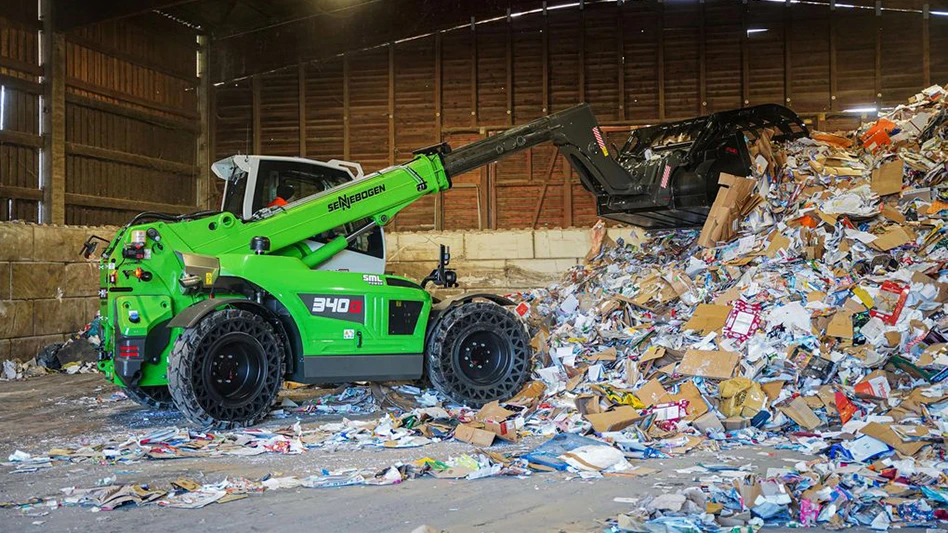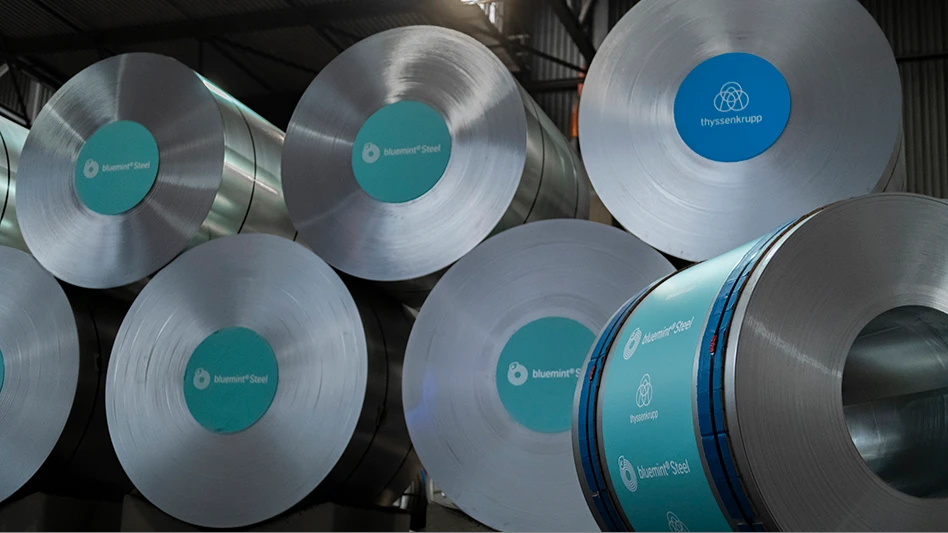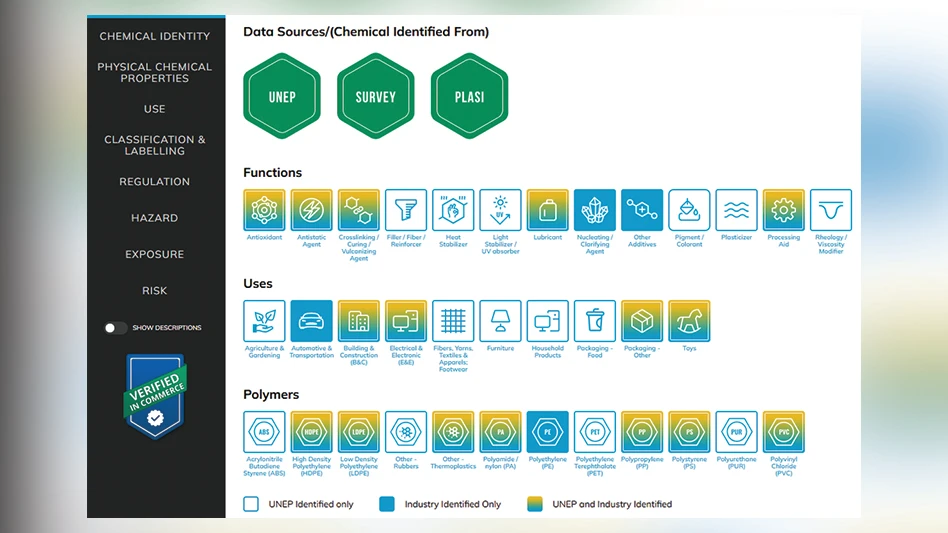Container loading systems are designed to eliminate much of the hassle involved with loading overseas shipping containers. They also have helped to provide an alternative to bulk shipping scrap overseas, a sometimes costly and time-consuming process. The three predominant types of systems—conveyor, compression and tilt—are designed to efficiently and safely load metals into shipping containers.
Conveyed Efficiency
Bill Tigner, president of U.S. Shredder & Castings Group, based in Trussville, Ala., says if a yard is loading containers with equipment that produces less than desired tonnage or takes more than 30 minutes to stage and load then it is time to consider an upgrade.
Louise Alderton, marketing and sales coordinator for A-Ward, based in Auckland, New Zealand, says, "Any company that is regularly loading containers should consider adding a container loading system to its yard, especially if its current practice is not as efficient as it could be, for example loading with a skid steer or manually tipping the containers."
Conveyor-based container-loading systems can be transported around the scrap yard and are height adjustable. A container is simply backed up to the conveyor system, and the loading can begin. Tigner says U.S. Shredder's mobile elevated overhung belt delivery system can fill most 40-foot containers in 15 to 20 minutes, depending on the type of material. The conveyor system also can load 20-foot containers.
"Our system is portable and can go where the product is instead of the product going to it, saving time and money," he says.
Tigner adds that he has seen yards take advantage of how quickly these portable units can be set up by using them where a quick-setup conveyor system is needed.
Most conveyor container loading systems, such as U.S. Shredder's, can load 20- and 40-foot containers and also are compatible with open- and closed-top containers. General maintenance tasks are similar to most other conveyor systems, Tigner says.
"[A] semi-monthly greas[ing] and an occasional belt change will keep this unit running for years," he says.
Favorable Tilt
Tilt systems also are a popular type of container loading system. Using this system, a container is backed up onto a tilt loader. Once the container is securely attached to the tilt loader, the container is turned onto its side at either a 70- or 90- degree angle, depending on the length of the container. Forty-foot containers are titled 70 degrees and 20-foot containers are tilted 90 degrees. A grapple, magnet or other attachment then can be used to load material into the container.
A-Ward's Alderton says tilt systems deliver quick results, like other loading systems. A-Ward's MiTilt systems can potentially load four containers in one hour, according to Alderton. Another possible advantage to the tilt system is that containers can be weighed throughout the loading process, which can help scrap yards achieve a more accurate maximum container weight.
In terms of safety, container loading systems have the potential to be much safer than earlier methods of container loading, such as manually tilting the containers. Alderton says the MiTilt can be operated by one person throughout the entire loading process remotely.
"Safety risk is minimized due to handheld remote-control operation as well as hydraulic door arms and access ladder accessory options," Alderton says.
Container-loading systems typically lessen the risk of damage to the container compared with the manual tilting method, sources say.
Alderton says, "We offer several different options for customers depending on their individual needs. This includes two tilting angles, 70 degrees or 90 degrees; various frame options to suit various logistics system; many productivity-boosting accessories; and three power pack options."
Similar to conveyor models, tilt–style container loaders are designed to accommodate ferrous and nonferrous metals as well as paper, plastics and electronics.
"A-Ward has sold dozens of container tilters for loading agricultural and mining materials," Alderton says. "We are also currently building a customized MiSlide horizontal loader for loading baled cardboard and plastic." She adds, "Really, the recyclable materials that could be loaded by our machines are limitless."
Smooth Security
In addition to tilt and conveyor systems, compression, or horizontal, loading systems are available. These models load containers using a horizontal sliding method. Scrap is loaded onto a separate contraption and slid into a container once full.
Greg Bushong, is owner of X-Body Equipment, a Loomis, Calif.-based company that produces a horizontal loader marketed as the Acculoader. "The Acculoader can be loaded with a grapple, magnet and or a front loader," he explains. "Material is placed in the open-top container and, when the targeted weight is achieved, the Acculoader inserts itself into the intermodal container, and the material is then transferred into said container," Bushong says.
While compression systems generally operate on a similar idea, each design offers variations.
A-Ward's Alderton says the MiSlide horizontal loader is pushed into the container by a truck, instead of sliding in on its own.
"To transfer the load, the truck reverses, and the shipping container encapsulates the loading chamber until it reaches the end, automatically connecting with the slide," she says. "With A-Ward's unique 'Pull-Assist' system, as the truck drives forward, pulling the slide with it, the load is held inside, as opposed to other machines that push material in," Alderton adds.
Because the truck encapsulates the container, the design virtually eliminates container damage, she says. Maintenance costs are also reduced because the unit does not use a telescopic ram.
Alderton adds, "Safety risk is minimized due to state-of-the-art features, such as the remote-controlled alignment and auto-locking function." Other benefits of the MiSlide's design include a minimal footprint and a weighing system that helps to ensure that the maximum load has been achieved, she adds.
Bushong and Alderton say maintenance on horizontal loaders consists of little more than making sure major pivots are well-greased.
"The diesel models have a service regimen typical of other diesel-powered plants," Bushong says.
"We are entering our third year of production with several high-volume units and expect load hoppers to require some maintenance in the near future. In all, it is a very low maintenance product," he adds.
Horizontal loaders have been used to load light and heavy scrap materials. Alderton says, "Our MiSlide horizontal loader is designed to load 20- and 40-foot containers with both light and extremely heavy gauge material."
Bushong says Acculoaders also have been used to load a wide variety of materials for recyclers. "We have loaded shred, HMS (heavy melting steel) 1 and 2, P&S (plant and structural), zorba, stainless and wire rope, to name a few," he adds.
A Little for a Lot
The cost of a container-loading system varies by manufacturer and by the style of container loader but they typically range in the mid-five figures to mid-six figures.
"The benefits are immediate, with lower labor costs, more containers per hour loaded and availability of a yard-use mover," U.S. Shredder's Tigner says.
"I have had customers buy their first unit and then turn around and buy a second within the first month," he adds.
Additional expenses associated with container-loading systems also can include the cost of electricity or diesel to run the power pack, according to Alderton, and labor costs.
The initial return on investment can be quick, usually within the first year, sources say. Tigner says that when the return on investment is factored in, the additional cost for the first two years is close to zero. "Customers have reported positive return on investment in less than one month," he says.
"Customers of our loading machines can expect to see benefits straight away," Alderton says. "We have a 'return on investment calculator' that we work through with our customers to determine their individual ROI for their specific operation," she continues. "Most A-Ward customers' payback period is well under a year."
The author is assistant editor for Recycling Today and can be reached at kstoklosa@gie.net.

Explore the November 2011 Issue
Check out more from this issue and find your next story to read.
Latest from Recycling Today
- Harsco brands slag-content asphalt as SteelPhalt
- ArcelorMittal puts French EAF conversions on hold
- Associations ask for effective EPR to drive textile circularity in Europe
- GESA report claims 72 countries recycled EPS in 2023
- Report: Saica exploring recycled paper mill project in Dayton, Ohio
- Hydro’s Alumetal to meet 15 percent of its energy demands through solar
- CSA Group publishes standard defining plastics recycling in Canada
- Second Cyclyx Circularity Center to be located near Fort Worth, Texas





